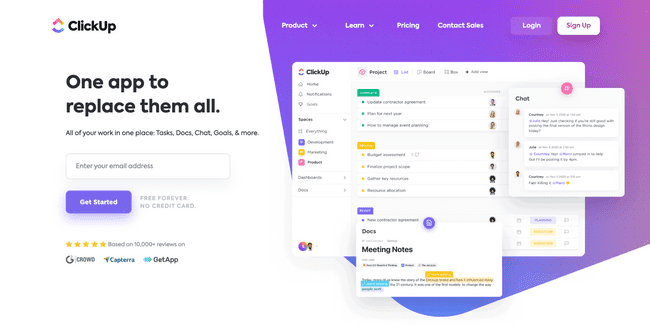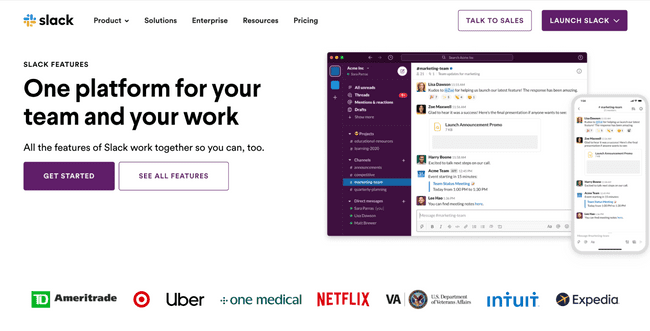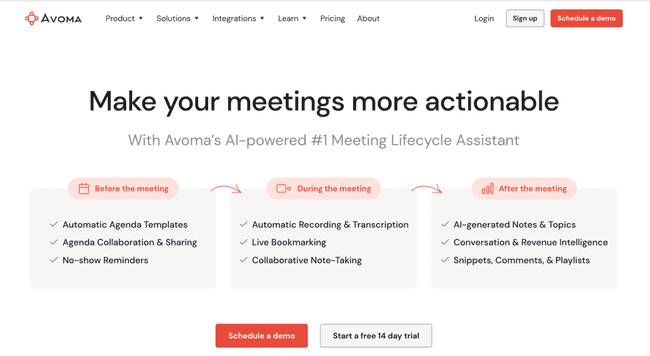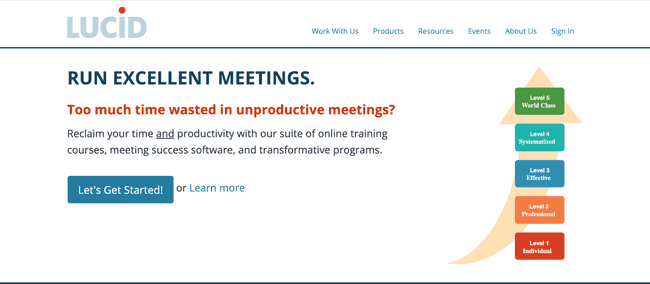16 Best Virtual Team Communication Tools (Pros, Cons & Pricing) - 2025
No Credit Card Required.

Communication is key to success in every aspect of life and business. Whether you're working at home or in an office, being able to communicate effectively with your colleagues is essential. With the rise of virtual workspaces and remote workforce collaboration, staying connected and collaborating effectively using digital collaboration platforms is becoming increasingly important.
This article will discuss everything related to the 16 best tools for effective virtual collaboration, and the ins and outs of those tools.
Top 16 Best Virtual Team Communication Tools
Many different types of online collaborative tools are available today. As we categorize these tools, they fall under five main categories:
1. Project management tools: These tools help you with project management challenges, activity updates, collaborative work management, task tracking, employee time management, and much more.
2. Team Collaboration Tools: This set of tools facilitates real-time communication between team members. With more companies adopting hybrid working model examples, team collaboration tools have become essential. They can act as instant messaging tools.
These tools also allow you to communicate visually with aids such as diagrams, mockups, and presentations using vectors, images, text, shapes, and even videos that can be commented on and worked on together. Beyond internal collaboration, effective communication also extends to how teams connect with customers. G2's guide on best live chat software highlights tools that support real-time engagement with clients and external stakeholders.
3. Video conferencing tools: These tools are the closest alternative you'll get to an in-person interview. Video meetings are great for conducting interviews, remote training sessions, and presentations through virtual communication platforms.
4. Video Presentation Tools: These digital collaboration solutions streamline the process, enabling you to craft visually engaging content for remote meetings and training sessions. Video presentation tools allow you to incorporate animated elements, interactive polls, and screen annotations for a truly immersive presentation experience, fostering effective collaboration among team members.
5. File Sharing and Storage Tool: These collaborative workspace software make it easy to share files and documents. Some of them also allow pairing with voip service providers for call recordings and transcripts which gives further flexibility managing virtual communication.
Plus, you can often leave comments and notes on the files that can then be viewed and replied to by other team members.
As you can see, the rise of hybrid collaboration tools and workplace collaboration technology has made it easier than ever for teams to stay connected, regardless of their physical location. Which type you choose should be based on the needs of your company (and your budget of course). Now let's have a look at some of the best tools on the market.
Top 16 Best Virtual Team Communication Tools
Below, we have discussed the 16 tools under four categories that help you solve almost all your pain points while managing virtual team communication.
Project Management Tools
1. Trello
Trello is a project management and visual collaboration tool that can manage your virtual office efficiently. It allows you to work together on projects by creating boards and adding cards. Trello has two main sections: Boards and Cards. A board is like a folder where you can add cards.
Each card represents something that needs to be done. Trello uses checklists to help you complete each task and stay on track of your work.

Source: trello
Pros
- Extremely customizable
- +100 integrations
- Easy to use
- Easy to set and keep track of deadlines
Cons
- Lacking of tutorials for effective use
- Free version is lacking in features
- Limited mobile app functionality
Price
- Free version
- Paid plans range between $5/user/month -$17.50/user/month
2. Asana
As a leading workstream collaboration platform, Asana helps manage tasks, projects, and collaborate with others. This collaborative productivity tool lets you create lists, assign tasks to teammates, and get feedback on what's going on within your team and across your organization.

Source: asana
Pros
- Allows for remote team collaboration
- Great for managing projects
- Task reminders
Cons
- Long learning process
- Lack of flexibility
Price
- Free
- Paid plans range from $10.99 - $24.99/user/month
3. ClickUp
A tool like ClickUp is helpful as it allows you to easily schedule meetings and send out invitations to attendees. You can also set up custom agendas, add notes, and upload documents before each meeting, making it ideal for remote work collaboration.

Source: Clickup
Pros
- Easy to use and customize
- Comprehensive onboarding videos
- Plenty of integrations
Cons
- Scalability is limited
- Limited file sharing options
Price
- Free trial
- Paid plans range between $5 - 19/user/month
4. ProofHub

Source: ProofHub
ProofHub is a project management and team collaboration tool that brings all the team members together and allows everyone to stay virtually connected.
Through its task management feature, you can plan, schedule, track, and deliver projects successfully. With notes, virtual teams get to collaborate on ideas and the project calendar will help to schedule your events, tasks, and milestones in one place.
Get quick answers without interrupting your flow. Just directly message your team members and clients in real time. All-in-all with this tool you can keep all your project-related files, clients, conversations, discussions, task allocation, and status reports, in one centralized place.
Pros
- All Tools in One Place
- Ultimate control over teams and projects
- Multiple task views: Kanban board, Gantt chart, Table & Calendar view
- No per-user fee & simple fixed-price plans
- Accountability for tasks.
- Everyone will be on the same page.
- Great customer support
Cons
- No granular control over the notification
- No Google sign in
Pricing
- 14 days Free trial
- Essential plan - $45/month billed annually (no per-user fee)
- Ultimate plan - $89/month billed annually (no per-user fee)
Team Collaboration Tools
5. Slack
Slack is an instant messaging and team communication tool that allows you to communicate with coworkers while working remotely or collaborating on a project.
As one of the most popular workplace collaboration tools, Slack integrates seamlessly into your existing workflow.
It provides real-time chat, group chats, direct messages, voice calls, and even text message notifications.

Source: slack
Pros
- Instant messaging
- Group chats
- Text message notifications
- Integrated with other apps
- Real-time updates
- File sharing
Cons
- Limited file sharing
- Lacking in customization
Price
- Free version
- Paid plans range from €6.25/person/month - €11.75/person/month
6. Miro
Miro serves as a digital workspace for visual collaboration. It is essentially an online whiteboard where your team can brainstorm ideas, draw diagrams, or record their voiceovers. Miro supports both Mac and Windows computers.

Source: Miro
Pros
- Integrates with many applications
- Viewable board history
- Has a variety of customizable templates
- Video chat is possible
Cons
- Poor usability
- Lacks robust sketching features
Price
- Free
- Paid plans range from $8 - $16/member/month
7. Avoma
Avoma classifies itself as a meeting intelligence software.
What Avoma does is record, transcribe, and then summarize your meetings so that they can be referred back to in the future or so that anyone who missed the meeting can catch up on what was said in their own time.
This functionality also makes for a much more collaborative meeting space!

Source: avoma
Pros
- Customizable and shared meeting templates
- Integrates with your CRM software & video conferencing tools
- Conversation transcriptions are easily shareable
Cons
- No functionality for recording in-person conversations
Price
- Free Version
- Paid plans range from $20/user/month - $105/user/month
8. Chanty
Chanty team chat app is an easy-to-use app that provides many different ways to stay in touch. It allows you to communicate with your team using text messages, voice calls, video calls, and even screen sharing.

Source: chanty
Pros
- Project management features
- Ability to quickly turn messages into tasks
- Unlimited search history
- Plenty of integrations
- Affordable
Cons
- Lack of advanced customization
Price
- Free plan
- Paid plan: $3/user/month
9. Stormboard
Stormboard is a cloud-based online whiteboard and collaboration platform that helps teams create a shared workspace online.
Stormboard allows you to manage documents, spreadsheets, presentations, and forms. You can also invite people to collaborate on these files. All this happens within one central location.

Source: stormboard
Pros
- Easy to use
- Allows you to collaborate on large files
- Supports document editing
- Allows you to organize your content
- Great for brainstorming
Cons
- Doesn't allow file storage
- Limited integration options
- Limited color customizations of the interface
Price
- Free
- Paid plans range from $10/user/month - $16.67/user/month
10. The Lucid Visual Collaboration Suite

The Lucid Visual Collaboration Suite combines two individually powerful yet highly connected solutions for team collaboration: Lucidspark for virtual online whiteboarding and Lucidchart for intelligent diagramming.
Lucidspark provides an infinite canvas for real-time or asynchronous brainstorming, ideation, and planning. Lucidchart offers advanced data and automation features that enable teams to visualize complex ideas, systems, and processes.
Pros
- Advanced collaboration features
- User-friendly interface
- Flexible, infinite canvas
- Data and automation features
- Integrations with industry-leading apps
- A wide range of customizable templates
Cons
- Limited mobile experience
Lucid Suite Pricing
- Individual bundle: $15.90/month and $11.93/month for Apploye readers
- Team bundle: $18.00/month and $13.50/month for each user for Apploye readers
- Enterprise plan available
11. Pumble
Pumble is a free chat and collaboration app for teams. It is free, easy to install, and it allows coworkers to communicate in real-time. At the heart of Pumble are team channels and direct messages. You can use one-on-one (and soon group) voice and video calls, mentions, threads, screen-sharing options, and guest access.
Therefore, thanks to guest access, you can invite and communicate with external partners, freelancers, or contractors. Pumble enables you not only to send messages but also to share files, videos, photos, or any other media you like.
You can use the app on all your devices. Hence, if you won’t be on your laptop/PC for some time, do not worry, every message will be synced to your phone or other computers you choose.

Source: Pumble
Pros:
- Easy to use
- Unlimited users
- Unlimited chat history
- 10GB storage in the free plan
- Video calls
- Screen sharing
- Native apps for Windows, iOS, Android, Linux, and Mac
Cons:
- One cannot customize notification sound
- To use the guest access feature, you need to upgrade your free plan
Price:
- Free version
- Paid plan: $1.99/ user/ month
Video Conferencing Tools
12. Google Meet
Google Meet is Google’s video conference solution that allows you to connect with others over the internet without having to install any extra software.
You simply open a browser window and enter a URL where you want to meet. Once connected, you can talk face-to-face, share screens, and present slideshows.

Source: google meet
Pros
- Simple to use
- Works well with Google Chrome
- Allows you to join from anywhere
- Can be used on multiple devices simultaneously
Cons
- Not always reliable
- Requires a Google account
Price
- Free
13. GoToMeeting
GoToMeeting is a web-based meeting application that enables users to conduct meetings through audio, video, and screen sharing. GoToMeeting offers free accounts as well as paid premium accounts.
The free version includes basic features such as scheduling, dial-in numbers, and recording. However, if you need more advanced features, you will have to upgrade to a paid account.

Source: goto
Pros
- Excellent customer service
- Integrates with other applications
- Document sharing
- Possible to host large meetings
- Meeting recording and transcriptions
Cons
- Chat option is limited
Price
- Free (basic)
- Paid plans range from$14 - $19/user/month
14. Zoom
Here is one tool we are sure you have heard of. Zoom.
Zoom is a web conferencing solution that allows you to connect with up to 500 participants at once.
This means you can hold conference calls with multiple people at the same time.
Zoom has four different pricing models: Basic, Pro, Business, and Enterprise. You can choose which model best fits your business depending on the number of participants you'll be hosting and the amount of cloud storage you need.

Source: zoom
Pros
- Affordable
- Can be used on any device
- Easy to use software
- Good customer support
- Transcript recording
Cons
- Not always reliable
- Requires a stable internet connection
Price
- Free version
- Paid plan $149.90 /year/license - $240 /year/license
15. Lucid Meeting
Lucid Meeting is, you guessed it, a meeting software that allows you to host virtual meetings, conferences, and presentations.
Lucid Meeting is available via desktop, mobile phone, tablet, and web browsers. The platform is easy to use and offers plenty of features including screen sharing, whiteboard, audio, video, and chat.

Source: lucid meeting
Pros
- Offers great integration with other tools
- Works well on all platforms
- Has a variety of templates
Cons
- Screen sharing is not always reliable
- No file sharing option
Price
- Free
- Paid plan: $12.50/host - $249/month
File Sharing and Storage Tool
16. Google Drive
Google Drive is Google’s online drive for file sharing and storage. It is a cloud-based file system that allows you to store files and share them with others. Files stored in Google Drive can be accessed from anywhere using a web browser by anyone with access.

Source: google drive
Pros
- Accessible from anywhere
- Multiple file types supported
- Shareable across devices
Cons
- Needs an active internet connection
- You need a Google account
- Limited cloud storage with the free plan
Price
- Free
- Paid plan: $12/user/month
17. Haiilo

Haiilo is an employee experience platform that connects all workers and enables them to thrive wherever they are — whether working in an office, remote, or frontline.
Haiilo is a leading employee experience platform that improves internal communications, employee engagement and advocacy, and knowledge sharing for large and medium-sized companies across various industries.
With Haiilo, companies can streamline top-down communications along with engagement through its intranet and social features. So, if you are looking for an employee platform that does it all, Haiilo offers an intranet with targeted communications based on user needs as well as actionable analytics.
Pros:
- Personalized news feeds for employees
- Customizable company mobile app for any workforce
- Social features like liking, and commenting to boost engagement
- User profiles and communities boost networking
- Seamless integration with major productivity suites like M365 and Google Workspace
- Detailed usage analytics and employee sentiment insights
- Excellent customer support
Cons:
- A steep learning curve for advanced customizations
- Additional products like employee advocacy require separate pricing
Pricing:
- Core, Business, and Enterprise plans
- Haiilo offers flexible pricing packages – request a demo to find out more.
What Is Virtual Communication?
Virtual communication is an online form of communication that does not require physical presence at the same time.
This type of communication can be done using any technology, including:
- Text messaging
- Instant messaging
- Video chat
- Voice over internet protocol (VoIP)
- Social media
- Web conferencing
Business communication is an essential part of any organization.
Not only across stakeholders but also within your team. It helps team members understand each other better, make decisions together, and ultimately work better together. Increased productivity within your team will lead to faster and better quality results. What more could you want?
In today’s world, most people are working remotely from their homes. Some even choose to work in coffee shops or restaurants. However, the challenges of managing a virtual team could be highly steep.
Things to Consider While Choosing Virtual Team Communication Tools
When selecting tools for your team, consider how they align with your workload management requirements.
The 16 tools shown above are the best of the available in the market. Yet again, numerous other tools can help you solve the pain points and get better services to some extent.
So, keep the following four things in mind while choosing a virtual team communication tool.
1. Security
Security is a top concern for a business owner or manager managing a virtual team. If the platform you are managing right now is not lucid enough regarding its privacy policy, you better leave the tool for good. So, consider privacy options before selecting your virtual team's most effective collaboration tool.
2. Ease of use
The more complex a certain tool is, the more time-consuming it will be. Moreover, you must train your new employees to adopt the systems if you have invested tons of money in them. So, avoid complexity and find something straightforward.
3. Integrations
Having a tool that effortlessly integrates with others is a blessing. So, avoid rigidity and select a tool that works fine with others.
4. Features (only those you require)
Offering many features is not unusual nowadays, but that’s bait. Look through the features you need for your team, not those that don’t provide anything useful.
Keep your eyes on these four issues and choose the tools based on them.
Challenges Faced During Virtual Team Communication
Here are just some of the many challenges faced with virtual team communication:
Different Time Zones
Communicating in an office is easy, you can just walk over to a person and have a conversation with them. However remote offices pose a new problem and it is an even bigger problem when your team members aren't even living in the same time zone. To keep everyone informed, establish clear communication protocols, and leverage collaborative communication tools effectively.
Digital Workplace Integration
One of the biggest challenges of global virtual projects is working across different time zones. Implementing new collaborative software requires proper training and onboarding. Teams must learn to utilize productivity and collaboration effectively while maintaining their usual workflow.
Harder To Interpret Body Language
Yes, at least with virtual communication there is usually a copy of your conversation to refer back to but does it outweigh the fact that there is little to no face-to-face communication? You could organize a video call or web conference but even then it is hard to interpret someone's body language.
Lack Of Company Culture
Being in an office together every day facilitates a bond between all your workers and allows for a positive company culture to develop. Working remotely makes it harder to establish this kind of relationship. There is less opportunity to interact with others on a daily basis which leads to a lack of a sense of community.
Difficulty In Managing Conflict
Conflict resolution is something that comes naturally when you are physically present. But when you are working remotely, you may feel more comfortable avoiding conflict altogether. The result is that conflicts go unresolved and eventually become toxic.
Employees Are More Distracted
When discussing distractions and the work environment, managing work from home distractions can be challenging. When you are going into an office every day, there is nothing (except maybe your mobile phone) to distract you. But at home, there is plenty. The plumber ringing on the doorbell, the laundry cycle beeping away and hungry children nagging you in your ear to name a few.
Virtual Team Engagement
Creating engaging experiences through virtual collaboration tools for teams can be challenging. Leaders must motivate employees who work remotely and utilize interactive meeting features to maintain team unity and participation.
Poor WIFI Connection
Even if you have all the tools and processes to make your virtual communication as efficient as possible, you still face one big issue - Wi-Fi. A few of your employees might face technical issues regarding their setup, and a poor Wi-Fi connection can make things worse for them.
The above problems will be there from the inception of the journey but don’t be distracted by them in the first place.
Instead, it would be best if you used virtual meeting software to allow your team members to participate in the same way as those who are physically present. To help you do this, use the tools we have compiled in the above list.
Conclusion
As you can see there are many virtual team communication tools available for you to use. Each one has its strengths and weaknesses, but they do offer some pretty cool features. Luckily most of them come with a free basic version so you can always try out a few until you find the one that works best for you!
Ultimately using a virtual communication tool is a great way to make your remote worker time tracking more efficient while helping workers feel more connected to each other.
Frequently Asked Questions
What are the best communication tools for remote teams?
For remote teams, the best communication tools include Slack, the go-to app for quick chats and clear channels. Also, when it’s time for face-to-face meetings, Zoom is here with reliable video calls. And for tracking projects, Asana and Trello are great options.
How do virtual teams communicate effectively?
To communicate effectively virtual teams must set clear response-time rules, pick the best tools for each type of message, and find the right balance between real-time chats and flexible, anytime communication.
How can I improve collaboration in my virtual team?
Boost teamwork with quick, regular check-ins, use tools like Asana to track tasks, and keep open communication through daily or weekly video updates. Also, pair up collaboration tools with messaging apps, e.g., try Slack with Trello to keep everyone on the same page and moving forward.
What features should I look for in a virtual team communication tool?
When choosing the right tools, focus on user-friendly interfaces, robust data security, seamless integration with other productivity apps, real-time and asynchronous communication options is vital for smooth collaboration and high-quality video and file-sharing features.
Are free tools effective for virtual communication?
Yes, many free tools, such as Google Meet and Slack’s free version, provide essential communication features that get the job done. But when you get the premium versions, you get access to enhanced security, more integrations, and larger meeting capacities.